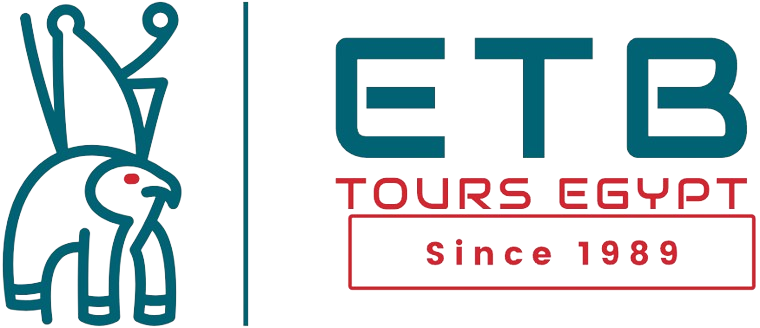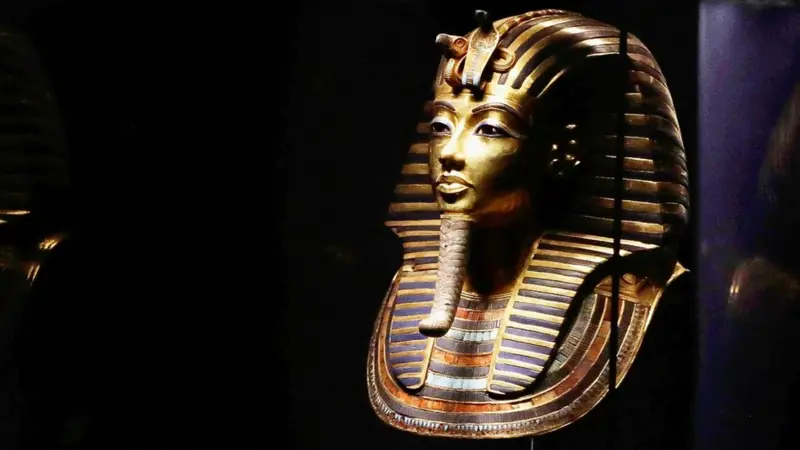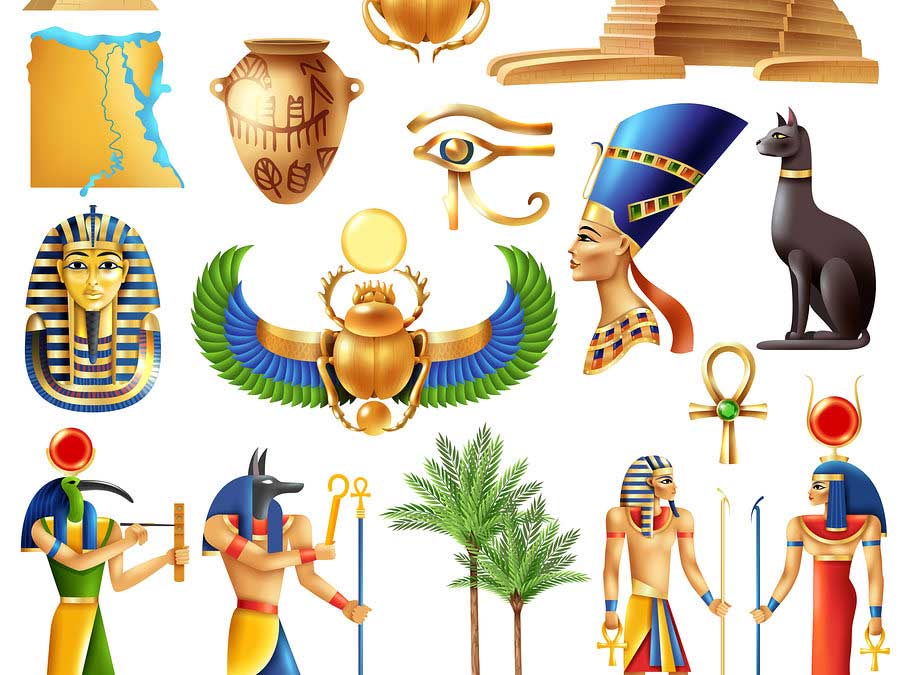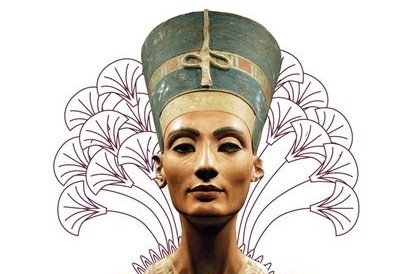How did the concept of life after death become a source of inspiration in the 21st century?
the Gold is everywhere: That was the first thing Howard Carter the British archaeologist saw when he stepped into the glittering tomb of Tutankhamun.
November 26th 1922 Carter raised his candle through a small hole in the entrance that had been sealed for 3,000 years while Lord Carnarvon waited anxiously outside. The story of this incredible find has been told and retold many times over the years after years of digging in Luxor with nothing to show for it.
now thousands of the young king’s treasures are in the soon to be opened Grand Egyptian Museum and new research can begin
a century later new questions arise about how Tutankhamun became a political symbol, did Carter loot the tomb and why the Egyptians got none of the credit for finding it. From the start these excavations were controversial
Although the laws at the time stated that the intact royal tomb’s contents had to stay in Egypt, it was thought that they would be sent abroad.
Carter and Carnarvon were hounded by the world press and made a deal with a British newspaper to exclude all other journalists, including Egyptians, from the tomb and create an atmosphere of hostility.
Historian Christina Riggs says the Egyptians saw them as representatives of the “old school” mindset very much aligned with the racist attitudes of the powers they represented.
Britain had occupied Egypt since 1882 but Egypt had gained partial independence in 1922. Tutankhamun was part of the ongoing struggle for independence from the imperial powers.
Dr Riggs who wrote “Treasured: How Tutankhamun Shaped a Century” says “This is a powerful symbol, this king reborn as Egypt is reborn”
In the 1920s Egyptian singer Munira al-Mahdiyya sang “Egypt the mother of civilization and Tutankhamun is our father” while the famous poet Ahmed Shawqi defiantly wrote “We refuse to have our heritage mistreated or stolen by thieves”
Credit for the most famous discoveries in Egyptology goes to luck as debris on the floor of the Valley of the Kings hid the tomb’s entrance from both tomb robbers and archaeologists for a long time.
But Lord Carnarvon’s luck ran out in early 1923 when he died from an infection from a mosquito bite although the press quickly claimed the “pharaoh’s curse” had struck him. Over the next decade it was Carter’s job to clear the tomb of its treasures with his team. Carter was known to be a stubborn and undiplomatic man and his relationship with the Egyptian Antiquities Service who oversaw the work was often contentious.
From the start there were rumors he was looting. Egyptologist Bob Brier has now found the evidence.
In his book “Tutankhamun and the Tomb That Changed the World” he quotes philologist Sir Alan Gardiner who wrote to him that he was in an “embarrassing” situation after an expert told him that the amulet and tomb seals Carter had given him were from the tomb.
Dr. Brier said, "Carter was giving away tomb items as souvenirs; he thought he owned them." The opulent rooms of Highclere Castle in Hampshire seem a long way from the dusty Valley of the Kings. But this grand house - now famous for Downton Abbey - was the family home of Lord Carnarvon
A lifelong adventurer, Lord Carnarvon once tried to sail around the world and was one of the first motorists to survive a car crash before he turned his attention to Egyptology. Lady Carnarvon, who has delved into her family archives to write "The Earl and the Pharaoh" says, "He found his passion in Egypt
How to pay for the restoration of his magnificent finds was the problem. She found a letter from a relative saying he thought they should be left in Egypt. Lady Carnarvon blames the "volume of misinformation" in the press for the suggestion.
"He was less interested in the treasures and gold than the discoveries she says In the end Egypt got the treasures from Tutankhamun's tomb and they have been on display for decades in the Egyptian Museum in Tahrir Square in Cairo.
Tutankhamun's funerary mask, made of pure gold and an ancient masterpiece, became the symbol of modern Egypt
But anger remains over Egyptians being erased from the official story of the 1922 discovery. Egyptologist Monica Hanna asks, "Most names disappeared from the archaeological record; we don’t know what they did, how they felt?
Alongside Egyptian workers cleaning the tomb site, Carter also hired Egyptian foremen; Ahmed Gerigar, Gad Hassan, Hussein Abu Awad and Hussein Ahmed Said.
Like Carter - who had no formal education before he went to Egypt at 17 to join an archaeological expedition - they were trained on the job.
An exhibition at Oxford University this year showed the Egyptian workers Despite official photos, their names were not recorded.
After a lull, interest in King Tutankhamun kicked in again in the 1960s and 1970s when Egypt lent his treasures to museums abroad for big exhibitions.
This created "Tutmania" in Western popular culture.
When the Grand Egyptian Museum, one of the world’s biggest museums, opens near the Pyramids of Giza, probably in 2023, it will surely spark interest again. The hope is it will bring in 5 million visitors a year.
For the first time the museum will show all of Tutankhamun’s 5,400 or so items.
Former museum director Tarek Tawfik says, "The Grand Egyptian Museum will allow us to rediscover the tomb as Howard Carter did 100 years ago."
Other highlights include the magnificent ancient Khufu ship and the 83-ton Ramses II statue which has been moved from Cairo’s main railway station. Meanwhile 100 years on Tutankhamun is still inspiring new scientific discoveries.
Modern conservation allows us to preserve delicate items like his sandals. New analysis has shown one of his iron daggers was made of meteoritic stone.
Theories about the young pharaoh's life are continually revised
But Dr. Brier - Mr. Mummy himself - doesn’t think Tutankhamun had a clubfoot after all. He points to the worn armor and other items in his tomb that show him as a warrior.
Not a “frail pharaoh” after all. “It’s all part of the ongoing battle over Tutankhamun.”
A century after he made headlines Tutankhamun has an afterlife and it’s not what we expected.
.
 English
English  Spanish
Spanish  Chinese
Chinese  French
French  Portuguese
Portuguese  Italian
Italian  Russian
Russian  Czech
Czech  German
German  Japanese
Japanese 








